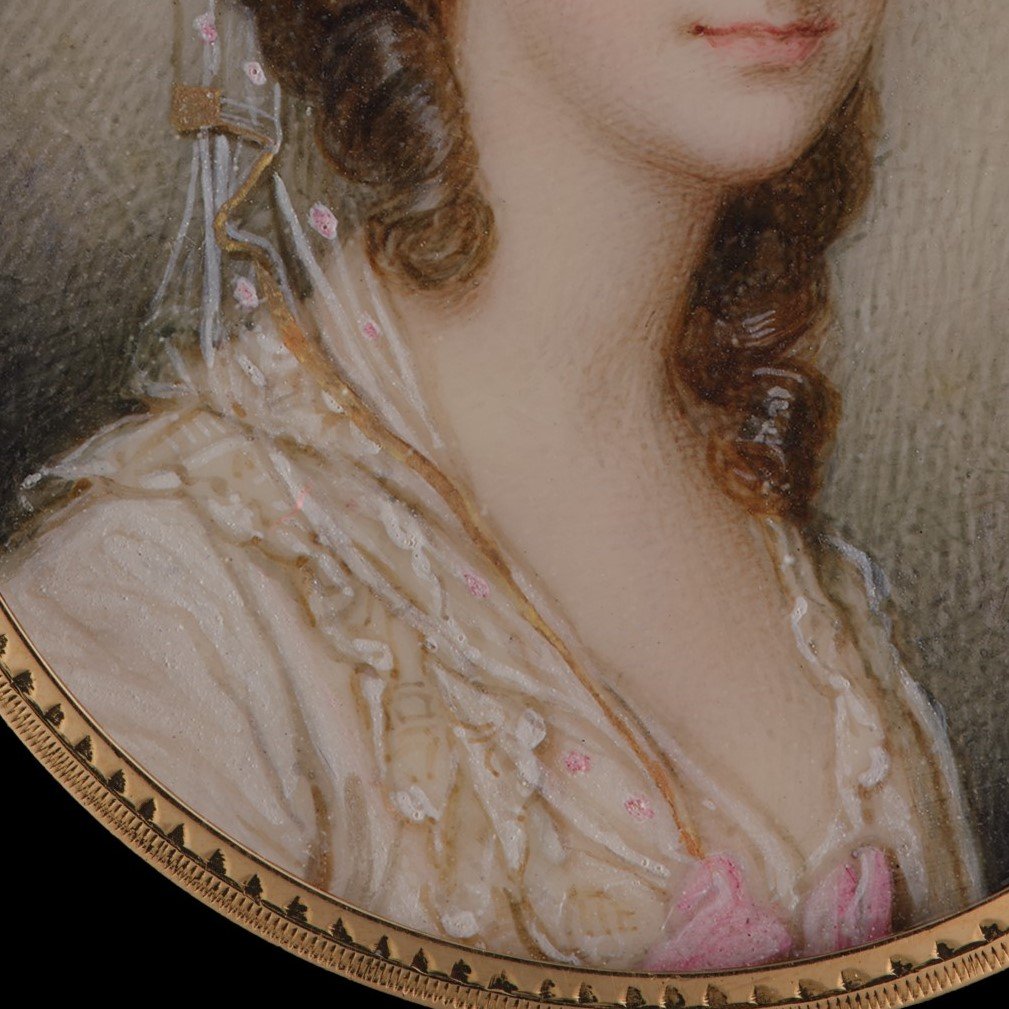RICHARD COSWAY R.A. (1742-1821)
Portrait miniature of a Lady, wearing lace dress with pink embroidery, pink satin bow, a matching turban in her brown hair; circa 1770
Watercolour on ivory
Ivory registration number: HV6QH8FU
Gold frame with beaded edge, the reverse glazed to reveal woven brown hair
Oval, 40mm high
Provenance: Private Collection, UK.
SOLD
“This style, often called ‘Turkish masquerade dress’, places the sitter in the circles of the modish upper classes, who were drawn to the self-styled ‘exotic’ fashions of Turkey and neighbouring countries…”
Painted when Richard Cosway was in his twenties, the style of this miniature is far removed from the artist’s later works. Later known for his distinctive flair and confidence in watercolour, the muted tones and careful, descriptive brushwork of this portrait are closer to the work of Cosway’s contemporary, John Smart.
The sitter wears a fashionable turban-style fabric in her hair, which is piled high on her head. This style, often called ‘Turkish masquerade dress’, places the sitter in the circles of the modish upper classes, who were drawn to the self-styled ‘exotic’ fashions of Turkey and neighbouring countries. As an ambitious younger artist, Cosway looked to the work of the successful Sir Joshua Reynolds as his guide, a portrait painter who often painted female sitters in this style.[1]
In 1769, shortly before the present miniature was painted, Cosway was admitted as a student to the schools of the newly founded Royal Academy of Arts. The following year he exhibited three oil paintings there, and he was elected an associate academician. In 1771 he displayed a further three oils and a miniature, and was elected Royal Academician. This was a very fast climb for someone recently emerging from the schools, and firmly placed him as the portrait miniature painter for the fashionable and wealthy. This swift rise also indicates that Cosway was a close friend of the men who held the power at the academy (including Charles Townley, whom Cosway painted as one of a group of connoisseurs admiring statues of a nude Venus, circa 1771). Displaying his oil portraits at the RA likewise enabled Cosway to demonstrate his prowess in complex conversation pieces to an admiring public.
Portraits such as the present work are rarer than those painted in Cosway’s full-blown style of the 1780s and beyond. Although these early miniatures can be seen as fastidious and more contemplative, their technique shows the extent of Cosway’s capacity as a sensitive draughtsman.
[1] See Reynolds’s portrait of Ann Trecothick, datable to circa 1775, sold Christie’s, November 2004.





